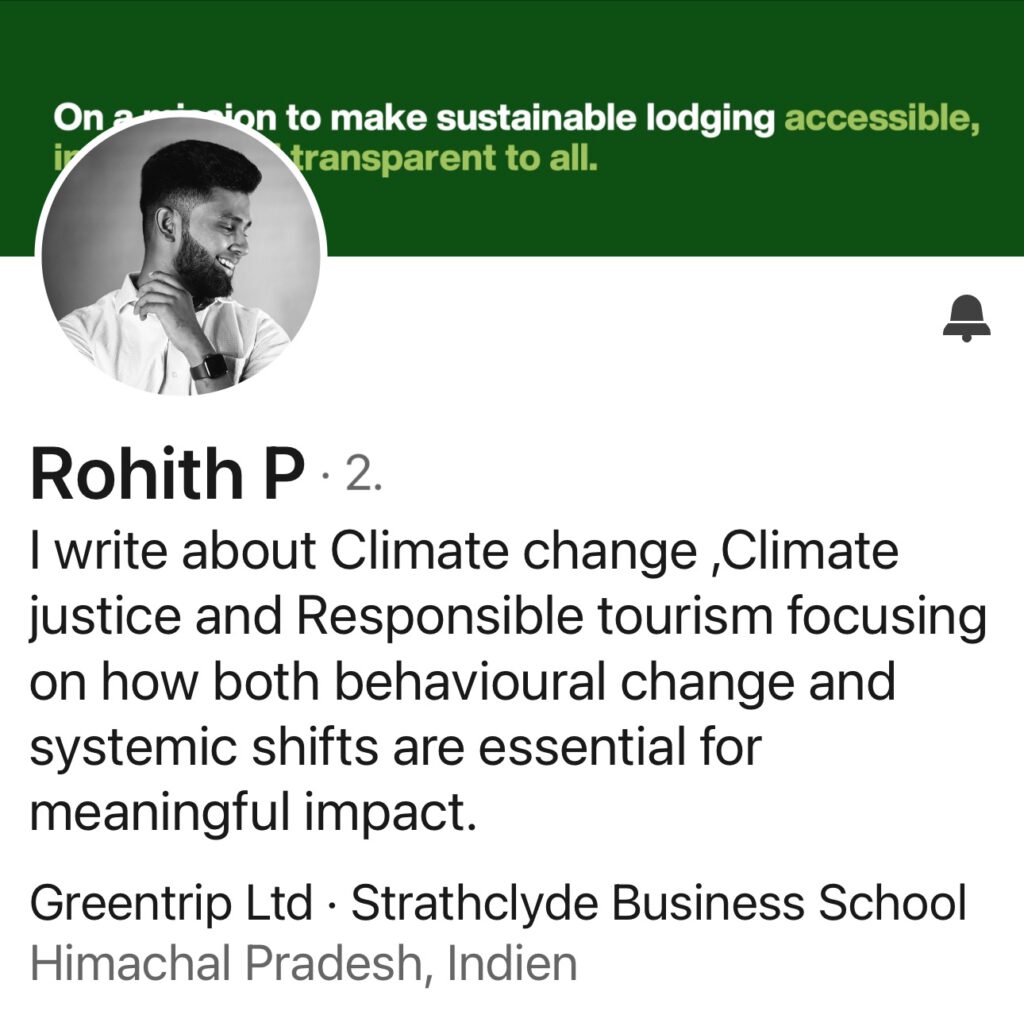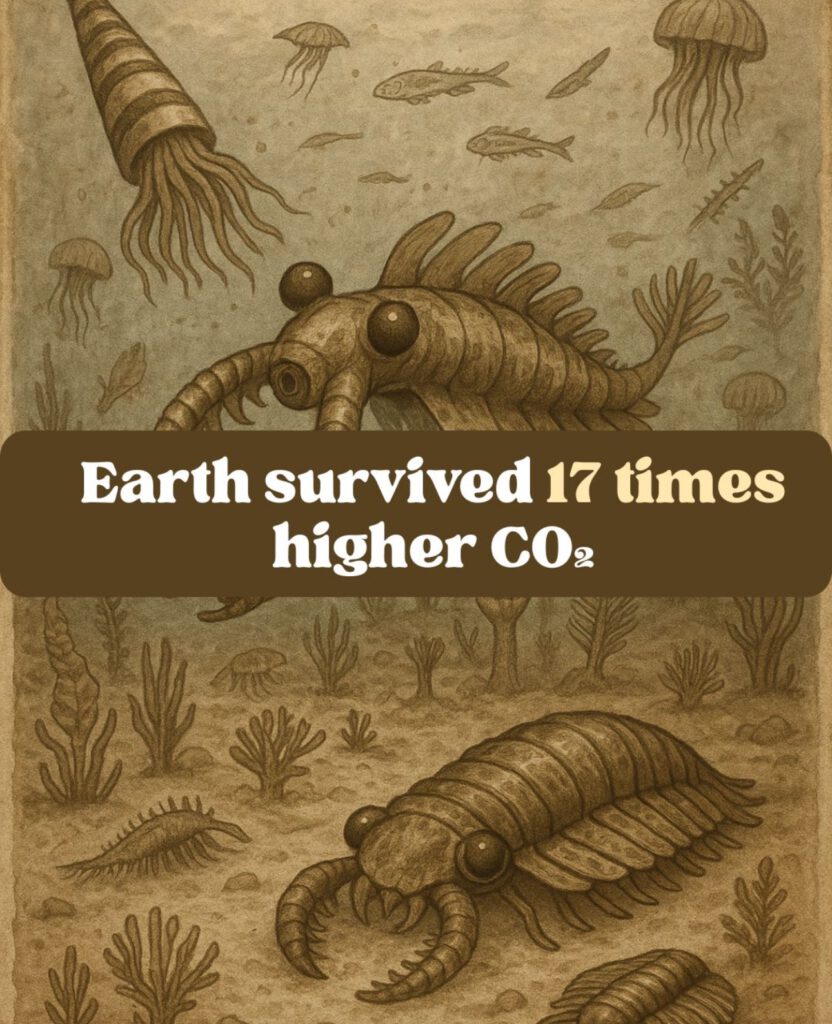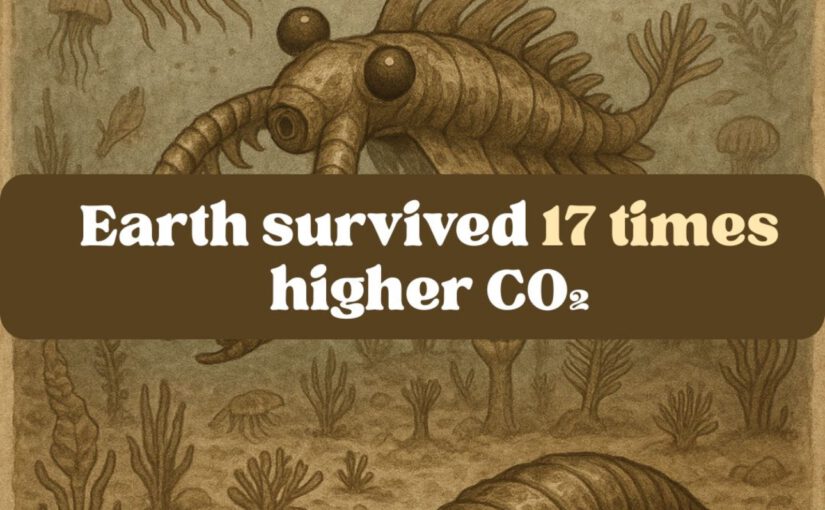A contribution by

Carbon dioxide (CO₂) levels are at their highest in millions of years and yet, in Earth’s deep past, they were up to 17 times higher than today. This fact often sparks confusion or even climate skepticism. So let’s unpack it clearly: Yes, CO₂ was once much higher.
As of 2025, atmospheric CO₂ is around 423 parts per million (ppm)—a dramatic increase from 280 ppm before the Industrial Revolution.
To put this in context:
We’ve added more CO₂ in the last 100 years than the Earth would naturally add in thousands. This spike correlates directly with fossil fuel combustion, deforestation, and industrial processes.
What „17x Higher“ Looked Like:
In Earth’s ancient history, specifically the Cambrian to early Paleozoic era (about 500 million years ago), CO₂ levels were as high as 7,000 ppm. That’s more than 17 times today’s levels. The Precambrian may have been anywhere from 2 to over 70 times higher than today, but the “17 times higher” figure is specifically grounded in more reliable data from the Cambrian to early Paleozoic.
But back then:
The Sun was 4–5% dimmer, reducing incoming solar energy. Earth had no humans, no modern ecosystems, and very different ocean currents and landmasses. Life was mostly marine, and there were no complex land-based ecosystems to destabilise.
In other words:
Earth survived, but it was a very different planet—hotter, less habitable, and hostile to most of today’s life.
So How Did CO₂ Drop?
Earth’s CO₂ fell over millions of years as rain broke down rocks and pulled carbon from the air, while plants absorbed it and oceans buried it deep below. As volcanic activity slowed, natural balance returned.
But in just 200 years, we’ve undone that work—burning fossil fuels and flooding the sky with ancient carbon faster than nature can absorb it. Weathering, forests, and oceans struggle to keep pace. The planet heats up. Ice melts. Seas rise. Weather grows wild.
So Why Does 420 ppm Matter So Much Now?
- Speed of Change: Ancient CO₂ changes occurred over millions of years. Today’s spike is happening in decades—giving ecosystems and societies no time to adapt.
- Modern Life Depends on Stability: Our agriculture, cities, and freshwater systems were all built during a rare 10,000-year period of climate stability. Rising CO₂ disrupts this foundation.
- Feedback Loops: Melting ice caps and forest diebacks can amplify warming, pushing the planet toward irreversible tipping points.
Yes, CO₂ was once far higher. But we shouldn’t romanticise prehistoric atmospheres. Those levels supported a planet unrecognisable from today—not one 8 billion people depend on.
If we keep ignoring everything that’s unfolding around us, the Earth will survive—just like it has through past cataclysms. But this time, it’s not just about the planet. It’s about us.
Humanity, and countless other species, may not survive what we’ve set in motion.

Quelle:
#ClimateCrisis
#CO2Levels
#FossilFuels
#EarthHistory
#ActOnClimate


